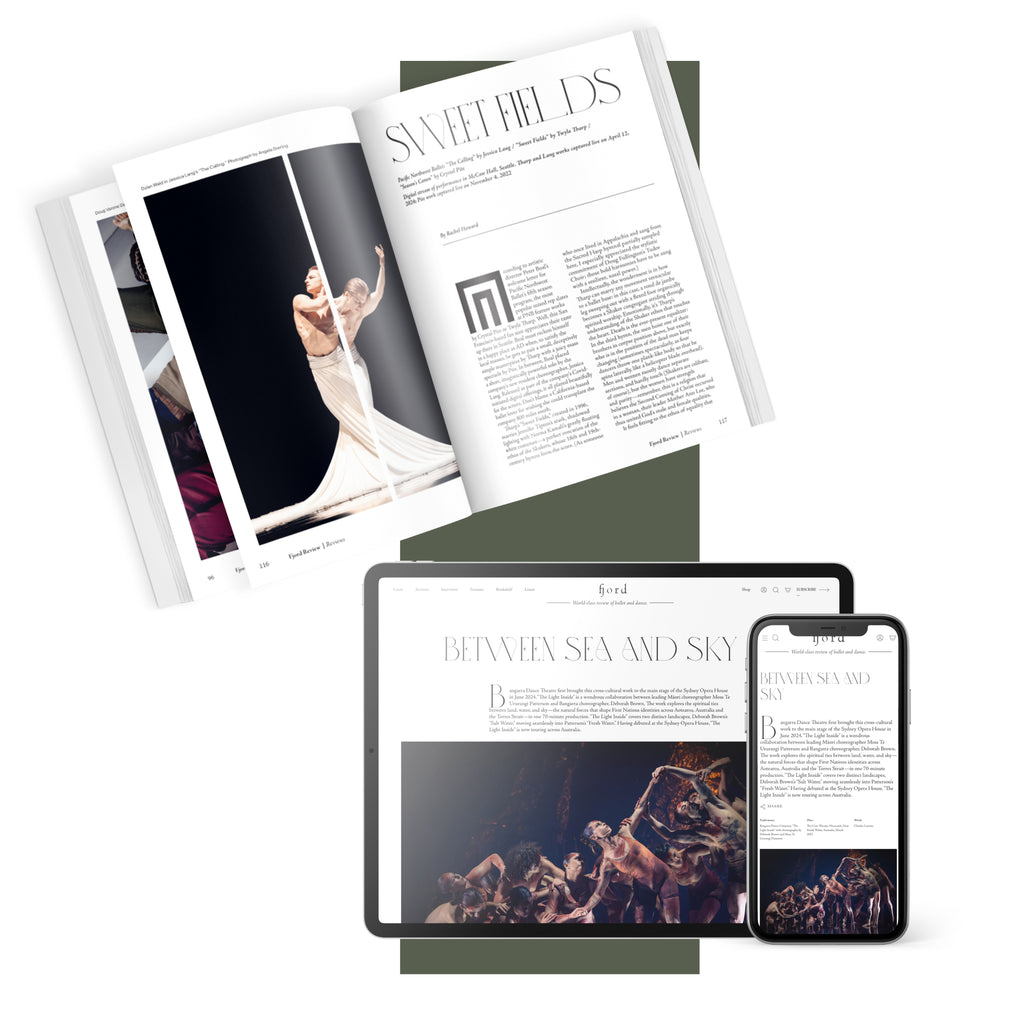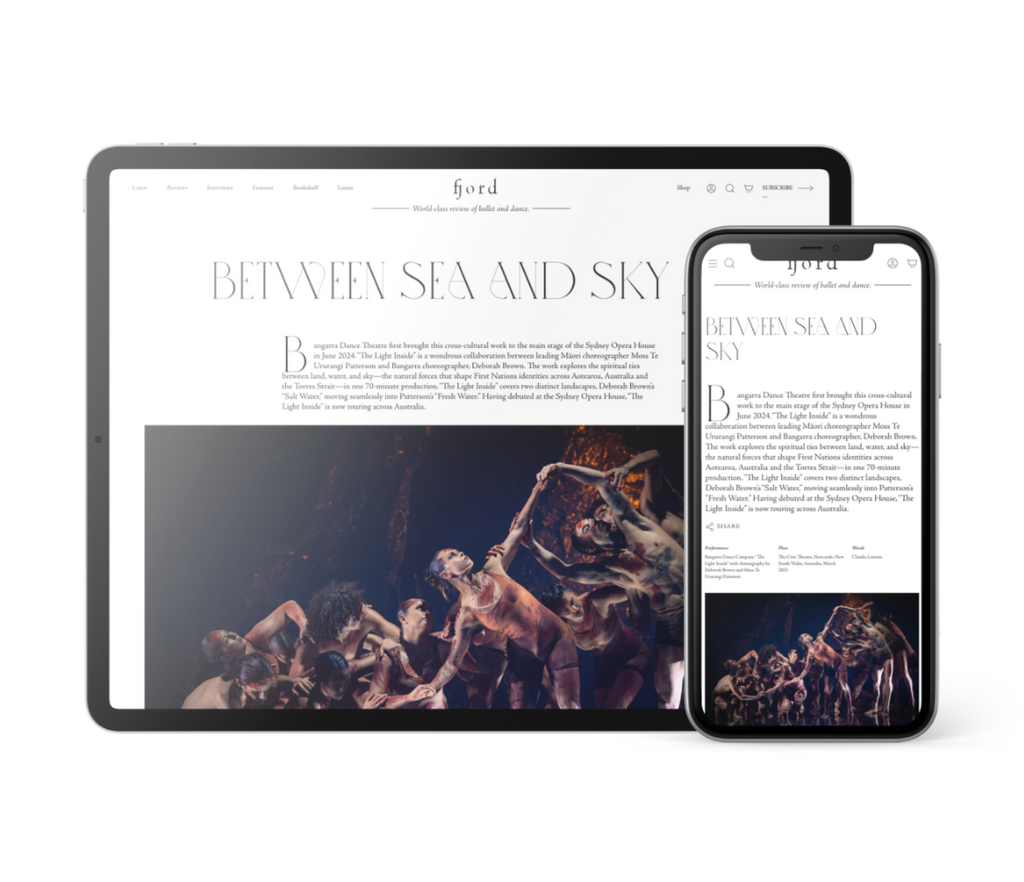Since Ratmansky has invited the comparison, I can attest that his “Grand Pas” is superior to Balanchine’s “Minkus Pas de Trois.” But that is exceptionally low hanging fruit on the Balanchine tree. The New York City Ballet has not presented the “Minkus Pas de Trois” since 1993, for good reason. It is mostly of interest to diehard fans who can study its DNA for insight into his more successful works. On Friday, what jumped out at me was how much Balanchine borrowed from it, structurally, for “Agon.” The “Minkus” coda maps right onto the coda of the first pas de trois in “Agon,” as the women flank the man and perform free-standing double pirouettes while he solos in the middle, and also when they alternate in partnered double pirouettes with him. In “Minkus,” the women await their unsupported turns in static fourths, and the do-si-do of supported pirouettes is orderly and calm. In “Agon” both sequences are syncopated and complicated; and therefore electrified. But it was fun to see where the germ of the idea came from. Or, to see one source, as Petipa has used parts of these schematics in other trios (Act I of “Swan Lake,” for example). He, Balanchine, and Ratmansky are all avid recyclers.
Though Balanchine sped up and tweaked his “Minkus Pas de Trois,” it still contains old-world conventions that he later eschewed (dead landings, planting before turns, stilted tombés pas de bourrées on pointe). KJ Takahashi had to sit and hop in several jump landings, not a preferred Balanchine look. In later technical showpieces, like the “Tchaikovsky Pas de Deux,” Balanchine would better link phrases to avoid this. “Minkus” is technically hard, exposed dancing from start to finish. You either hit the steps or you don’t. The young cast of Allegra Inch, Takahashi, and Rommie Tomasini did a valiant job, but there were moments that escaped them.
Also, I was confused about the coaching. In the first solo, Tomasini spotted the wings during turns—a big no-no in Balanchine training. But then Inch spotted front throughout her variation. I guess Ratmansky—or perhaps the stager/copyright owner Marina Eglevsky—was not making a point of this distinction. Or maybe this old dance doesn’t have that much specificity. The whole thing feels sketchy, as if Balanchine was just tinkering around with some passages he remembered from his Mariinsky days. He did not engage in monkish study to mount this piece.
Because “Minkus” feels like such a draft, I didn’t think Jérôme Kaplan’s bold saloon girl costumes were the right choice. The froufrou, saturated tutus and black tights and pointe shoes made a highly stylized statement, straight out of “Western Symphony” or “Bourrée Fantasque.” Ratmansky’s “Grand Pas” was less ostentatious in its look, if not in its technical challenges. Kaplan’s tutus here were black and sleeker, with a few pops of yellow and fuchsia. Surprisingly, the women sported messy practice buns—a clever nod, perhaps, to the perpetually unfinished nature of old ballet excavations? There are no bones to study in ballet archaeology; one can never tie up all the loose ends of a dance partially lost to time.













comments